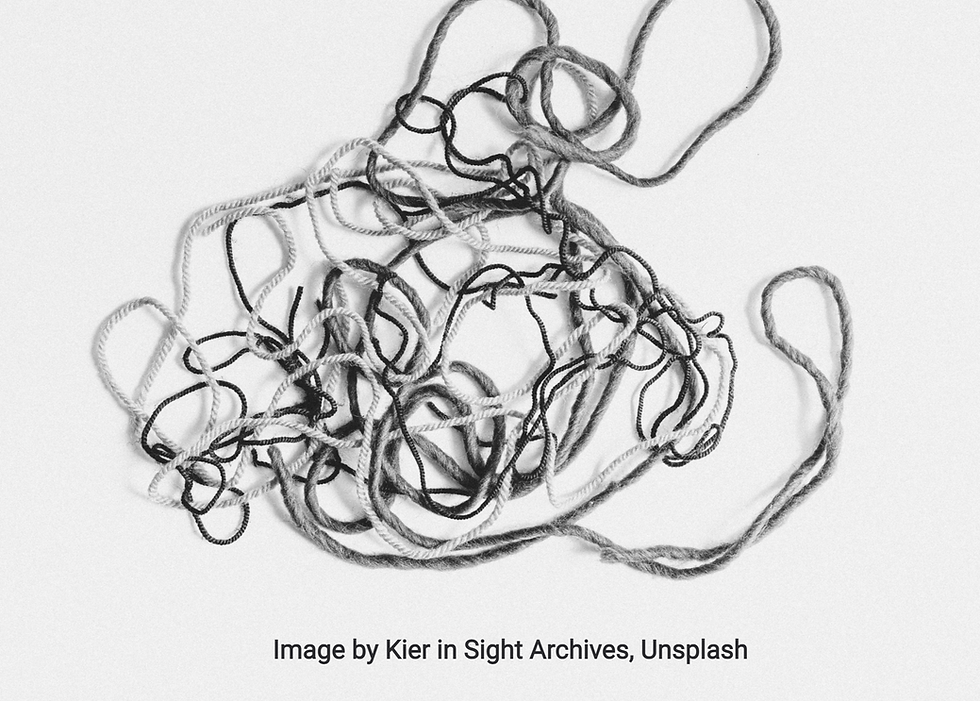Small Experiments
- Louise Carnachan

- Oct 4, 2022
- 3 min read

I was inspired by a blog post written by my friend, Anne Kearney (article here). She discusses the small urban design experiments found in Barcelona, Spain where she lives. Two examples she cites are play areas which are painted on the ground blocking off car traffic and future green spaces currently designated by potted plants where previously there had been parking.
At first she was disappointed by what looked to be cheesy fixes, but then she saw the wisdom of using inexpensive components to test how well concepts worked before committing to major construction. Assessment of the aesthetics/function and reactions of neighbors and the populace at large could be gathered, as well as identification of any unintended consequences. Once the data are collected, projects could get a green light for full scale implementation, be modified or abandoned altogether if proved unworkable.
When I facilitated groups who attempted to arrive at consensus, it could sometimes be a painfully slow process. If some folks couldn’t be all in with their support, they needed to say so—but then we didn’t have consensus. (I personally don’t believe a lackluster “I can live with it” is sufficient agreement because too often the door is left open to trash talk behind the scenes.) One work-around for a draggy process was to agree to a pilot phase then reevaluate. The question was posed, “If you are unable to put your stamp on the long term, would you be willing to try it out in the short term and test the outcome?”
This approach only works if the time frame for the pilot and the evaluation component are honored. Using the strategy to sneak in a change without completing the check back is a bait and switch which only erodes trust in the team or the leader. But when agreed upon standards are used for evaluation, then the data drives modification, implementation or exit.
In another arena, I’ve long been a fan of making small tweaks in communication and observing the results. “Consider it an experiment,” I’d encourage in training sessions and coaching. Give it a try, see how you feel, and assess the reaction you receive. Then like a pair of new shoes, you can break them in or take them back and try something else.
Making measured adjustments vs. a flat out about-face is particularly wise when improving a work relationship. Say Hector and Isaac have baggage from a previous project. Isaac’s point of view won that time and Hector had been giving him the cold shoulder ever since. The problem was that neither of them was going anywhere and Hector had become increasingly aware that Isaac’s contributions were actually good (as much as it bruised his ego). Because they would be assigned to a team again, Hector felt it was up to him to break the ice. An apology from Hector could work but it was out of character. If he suddenly became friendly, it would be too much of a stretch for Hector and disconcerting to both of them. Besides, a personality transplant in demeanor would read as fake and manipulative to Isaac. There are steps Hector could take that would be more subtle:
Start with a “good morning” or some type of acknowledgement such as nodding his head when Isaac walks into a meeting instead of the normal looking down or away.
Begin to offer truthful comments about Isaac’s contributions. Gushing praise won’t work (besides, Hector would be likely choke on it). However, he could detail what was helpful about Isaac’s input. That would show his attentiveness and that he hasn’t type cast him as the enemy.
Take baby steps to see what works. You certainly don’t want to make things worse. It’s unlikely a chilly relationship will repair overnight, but it can start to thaw. Once that begins, pleasant exchanges have a chance to become normalized and collegial communication can get back on track.
In Anne’s blog, she relays her own story of a short term fix to see how it worked before full scale commitment. She and her husband crafted temporary shelving out of cardboard boxes to see if the location was convenient. Once they determined they wouldn’t bark their shins on it, they bought the wooden furniture. The analogy works for communication—try things out, they don’t need to be the final product. If you aren’t stumbling over the words and the reactions to what you’re doing have been positive (or at least neutral), then you’re on the right path. Small steps can be morphed and before long you’ll have durable change.



These are great suggestions for small experiments in the workplace. I like your baby-step/measured adjustment advice .. so often people think they need to do something major to address a problem when actually they may make better and faster progress by starting small.
Your suggestions are so practical, I'm sure they're useful in any group situation in which the same people are called upon year after year to rejoin their efforts. Sincerity changes hearts.
I can't wait to try these ideas at work. Improving relationships by making small changes first seems so much more likely to succeed than large-scale changes that may come across as insincere.
Thank you!